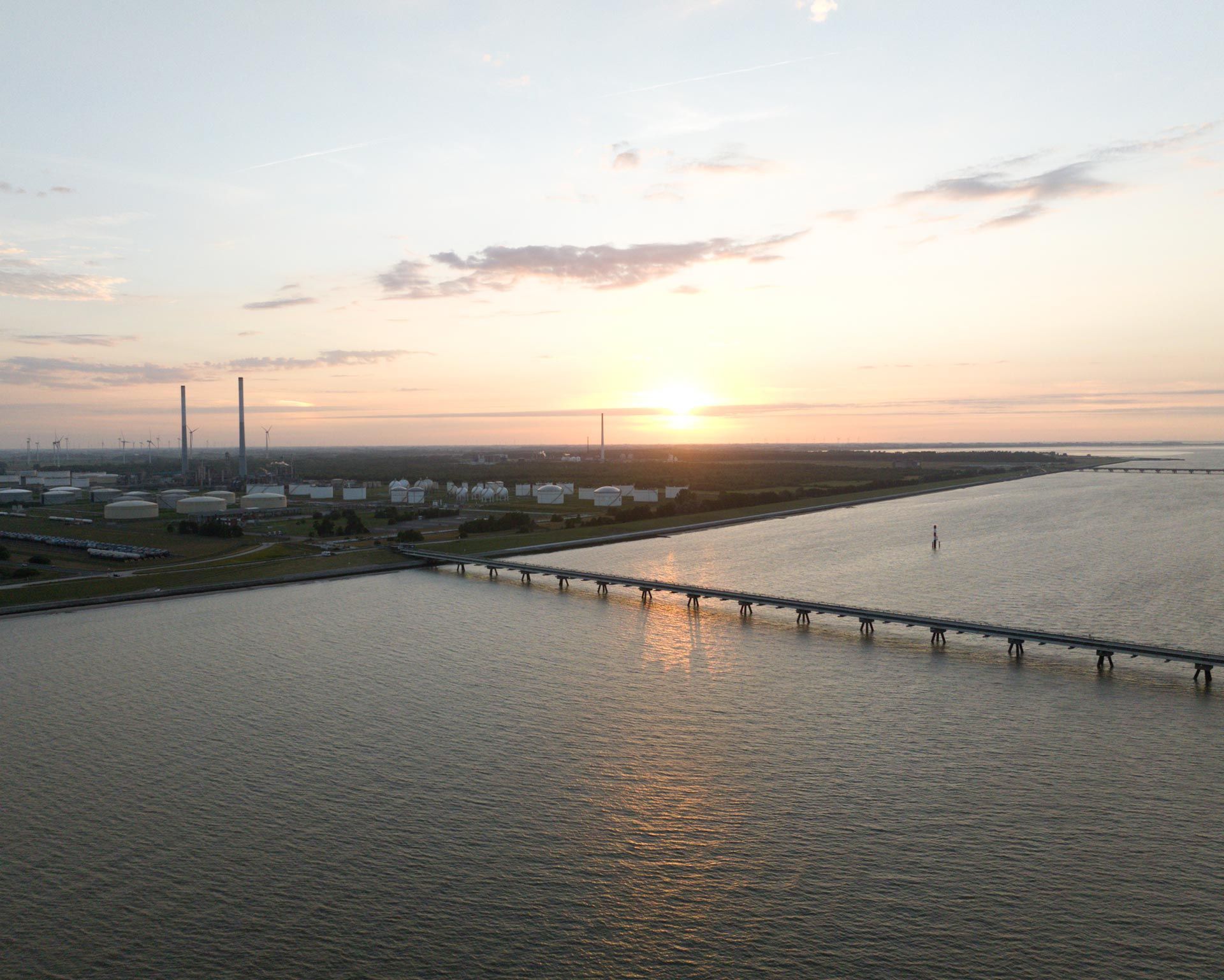ENERGY HUB WILHELMSHAVEN
Wilhelmshaven is evolving from a hub for fossil energies to a new hub for the energy transition. Wintershall Dea is part of it.


In Wilhelmshaven, politics, administration and companies are working hand in hand to establish the ENERGY HUB as the new centre for Germany's future energy supply. Wintershall Dea is part of the ENERGY HUB with its two projects BlueHyNow and CO2nnectNow. More than 20 companies are planning projects here. One focus is to produce hydrogen: with electricity from nearby offshore wind farms or from natural gas. The ENERGY HUB is also to become a key location for the import of hydrogen derivatives such as ammonia. These are imported from abroad and converted to hydrogen on site. The planned hydrogen production in Wilhelmshaven is intended to accelerate the ramp-up of an international hydrogen economy in Europe. By 2030, more than half of Germany's hydrogen demand could be covered by the ENERGY HUB.
Wilhelmshaven has the best prerequisites to become Germany's new energy hub: the only deep-water port in Germany, connection to the long-distance hydrogen grid and existing cavern storage facilities that can be converted to hydrogen storage.
BlueHyNow – Hydrogen from Wilhelmshaven
With BlueHyNow, we want to build a state-of-the-art plant in Wilhelmshaven for the production of hydrogen from natural gas. BlueHyNow is to produce over 200,000 cubic metres of hydrogen per hour. That is 5.6 TWh per year and corresponds to about three times the energy consumption of the massive Volkswagen plant in Wolfsburg in full year 2019. In the process, CO2 emissions of only 80 g CO2/kWh are produced (for comparison: natural gas and hard coal have CO2 emissions of 228 and 389 g/kWh respectively). We want to supply the hydrogen to industrial companies in the surrounding area. For BlueHyNow, Wintershall Dea relies on steam reforming technology. In this process, natural gas and water are converted into hydrogen and CO2. The CO2 is later safely stored under the seabed using CCS. Natural gas is used exclusively as a raw material to produce the hydrogen. We transport the natural gas from Norway via pipeline to Wilhelmshaven. With green wind power from the North Sea we want to generate the process energy for the hydrogen plant.


90-135
TWh annual hydrogen demand in Germany until 2030.
5,6
TWH p.a. planned hydrogen production with BlueHyNow.
5
per cent of the German hydrogen demand could be covered by BlueHyNow.
CO2nnectNow – on the way to net zero


With CO2nnectNow, we want to develop Wilhelmshaven into a logistical CO2 hub. As part of the ENERGY HUB, a collection point for CO2 is planned to be created here. The CO2 produced in the production of hydrogen from natural gas or unavoidable CO2 emissions from industrial companies from all over Germany can be transported to Wilhelmshaven and from there transported by ship or pipeline to storage sites in the Norwegian and Danish North Sea. There, the CO2 emissions are planned to be safely stored in deep geological layers under the seabed using CCS (Carbon Capture and Storage).
In this way, we want to advance the decarbonisation of Germany.

